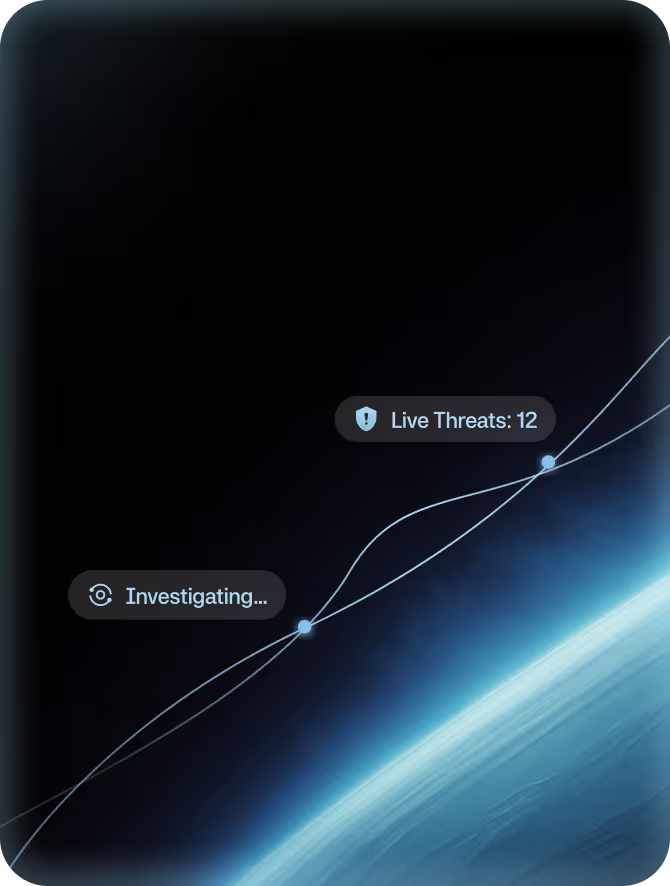Building Your Own SOC Can be a Risk, Not a Strength. Here's Why.

For years, the standard approach to enterprise security was clear: build your own Security Operations Center (SOC). A centralized team, equipped with advanced tools and tight control over detection and response, was seen as the gold standard, a sign of security maturity. But the threat landscape has changed, and so have the demands on security teams. Today’s threats are faster, more complex, and constantly evolving, while the resources needed to build, staff, and maintain a high-performing in-house SOC have grown exponentially. The traditional model is no longer just expensive, it’s inflexible and increasingly risky. Internal SOCs struggle to scale, adapt, and retain talent, all while threats continue to accelerate. Relying solely on an in-house team creates blind spots, delays, and operational strain. In this new reality, resilience and agility matter more than ownership. It’s time to rethink the assumption that control requires building everything yourself.
Here are 5 reasons why building your own SOC may be more of a liability than a successful endeavor:
1. The Threat Terrain Moves Faster Than You Can Hire
Today’s threat terrain evolves at machine speed, driven by AI-powered attacks and adversaries who iterate faster than most organizations can react. Companies that still rely on their own internal SOC, are often not staffed with enough talent, and are manually applying detection logic which means that they are not only slow to detect threats, but also to respond to them. The result? A widening gap between threat velocity and your team’s ability to keep up. To stay ahead, you need security that adapts instantly, leveraging agentic AI, continuous learning, and expert-guided response to close the gap between detection and defense.
2. After-Hours SOC Blind Spots
Most internal SOCs aren’t truly 24/7, even if they claim to be. After hours, teams are often reduced to on-call rotations, limited coverage, or automated alerting with no active investigation. This creates dangerous blind spots during nights, weekends, and holidays, exactly when attackers know response times are slowest. Threat actors exploit these windows, launching attacks when they’re least likely to be detected or contained. Relying on a SOC that responds after an incident, when it “wakes up”, is a gamble. To stay protected, organizations need continuous, expert-driven monitoring and response that is on 24X7. Real threats don’t wait for business hours. In fact, they sometimes choose the quiet hours on purpose to slip by unnoticed.
3. Resilience Is Built Through Distribution
Resilience in modern security operations goes beyond 24/7 coverage, it’s about collective visibility and intelligence. Internal SOCs often operate in isolation, limited to their own data, tools, and experience. This narrow view makes it difficult to recognize emerging or unfamiliar threats before they strike. Global managed security providers operate at a different scale. By monitoring activity across hundreds of customers and diverse industries, they gain access to a vast, continuously expanding dataset of threat signals. This distributed visibility enables the early identification of anomalies, correlations, and attack patterns — often before they surface in public threat intelligence feeds. True resilience is built through distribution: by learning from many environments at once, sharing insights across them, and using that collective awareness to detect and respond faster than any single organization could alone.
4. The Illusion of Control Is Undermining Your Security
For years, building your own SOC was the only way to stay in control. If you owned the tools and the people, you owned the outcome. That made sense when managed security meant giving up visibility or flexibility, but that era is over.
Modern providers now deliver the same, and often greater, levels of control through agentic AI that adapts to your environment and acts with your intent. Instead of static playbooks, you get intelligent systems that learn, adjust, and respond in real time, with your team still in the loop. True control isn’t about ownership anymore. It’s about clarity, context, and command. The ability to see, understand, and act instantly without the weight of running everything yourself.
5. In-house SOCs Lead to Budget Blowouts
Building and maintaining an in-house SOC might seem like a strategic investment, but in reality, it often leads to unchecked budget blowouts. The costs go far beyond initial setup. Tool licensing, the infrastructure, recruitment and staffing costs, 24/7 coverage, and ongoing upgrades quickly pile up. As threats evolve, so do the demands on your SOC, requiring constant reinvestment just to keep pace. Add in the hidden costs of analyst churn, training, and underutilized tools, and your security budget can spiral out of control.
Conclusion
Clinging to the illusion that full control requires building and operating your own SOC can leave your organization stretched thin, overextended, under-resourced, and ultimately more vulnerable. Internal SOCs often struggle with rising costs, staffing challenges, and the constant pressure to keep up with rapidly evolving threats. The pursuit of control through ownership can quickly become a liability, draining time, budget, and attention from actual security outcomes.
Daylight offers a modern alternative: agentic AI-driven security services that deliver full visibility and precise, expert-guided response without the weight of traditional SOC models. Through real-time collaboration tools like Slack and Teams, your team stays fully informed and engaged. Customized playbooks and contextual intelligence ensure responses are aligned with your environment and business priorities. The result is true command without having to build the command center from scratch.
With Daylight, you gain predictable costs, elastic scalability, and enterprise-grade protection, all without the operational drag of managing infrastructure and staffing internally. You can scale security operations up or down based on business needs, not internal headcount, and focus on outcomes, not overhead. It’s a model designed for agility, resilience, and clarity, giving you real control, without the illusion.




